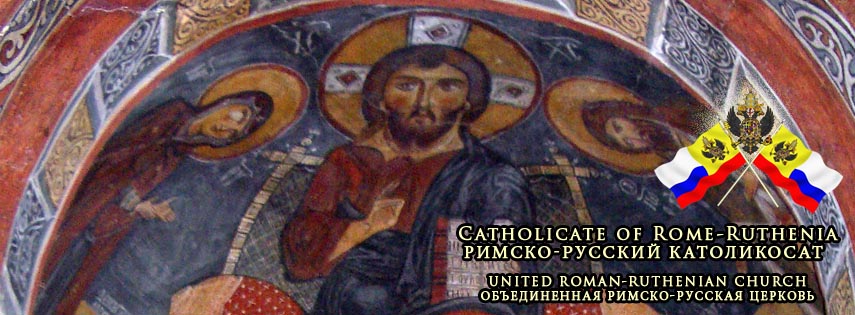His Most Excellent Reverence Monsignor Rodrigues, Archbishop of Lyons and Primate of the Gallican Rite ordains a new priest for the Holy Church.
Mar Ignatius Peter III, Patriarch of Antioch - Predecessor of the Catholicate
 |
| Mar Ignatius Peter III, Patriarch of Antioch |
Mar Ignatius Peter III, Patriarch of Antioch served as the head of the Syriac Orthodox Church between 1872 and 1894. Born in Mosul to a well-known Christian family, many consider him to be the father of the modern church.
He was a priest at the Monastery of Mor Hananyo and was consecrated Metropolitan Archbishop of Damascus in 1846, taking the name Julius.
After the death of Patriarch Ignatius Jacob II, Ignatius Peter was unanimously elected by the synod as patriarch. Although he declined the position at first, he was eventually persuaded to accept and was consecrated and enthroned as patriarch 16 June 1872. At that point he took the Patriarchal name Ignatius.
Among his many accomplishments as Patriarch was the improvement of the Malankara Syrian Church in India, which involved diplomatic efforts in Britain and meeting with Queen Victoria. In Constantinople, he established a new church dedicated to the Blessed Virgin.
He is buried at Beth Qadishe.
Pope Saint Pius IX - Predecessor of the Catholicate
_(1871).jpg) |
| Pope Saint Pius IX |
Antonio Cardinal Barberini, Archbishop of Reims - Predecessor of the Catholicate
.jpg) |
| Antonio Cardinal Barberini |
Antonio Cardinal Barberini was Archbishop of Reims (which had the right to crown the Kings of France) and also a military leader and patron of the arts. As both a Cardinal-nephew of Pope Urban VIII and a member of the elite of France, he was in a highly privileged position to shape politics and history.
Sergei, Patriarch of Moscow and All Rus' - Predecessor of the Catholicate
 |
| Sergei, Patriarch of Moscow and All Rus' |
Patriarch Sergei (Ivan Nikolayevich Stragorodsky) served as 12th Patriarch of Moscow and All Rus', 1943-1944. He had previously served as Bishop of Jamburg, Cicar of the St. Peterburg diocese, Archbishop of Vyborg and all Finland, and Metropolitan of Nizhny Novgorod. Grigori Rasputin contacted him as one of the first in the capital. He was arrest by the Bolsheviks in January 1921; being exiled after several months in jail to Nizhny-Novgorod.
Metropolitan Macarius of Moscow - Predecessor of the Catholicate
 |
| Metropolitan Macarius |
Metropolitan Evdokim, Archbishop of the Aleutians and North America, Archbishop of Nizhny-Novgorod - Predecessor of the Catholicate
AS_1.png) |
| Metropolitan Evdokim, Archbishop of the Aleutians and North America, Archbishop of Nizhny Novgorod |
Pope Saint Leo X - Predecessor of the Catholicate
 |
| Pope Saint Leo X |
Pope Saint Leo X (Giovanni di Lorenzo de' Medici) was Bishop of Rome from 1513 to 1521. Of the powerful and prominent Medici family of Florence, St. Leo was the second son of the famed Lorenzo de' Medici, Lord of Florence. The Papa-Catholicos is his temporal and spiritual successor as Florentine Archfather.
St. Leo became a cardinal in 1489 and was elected Pope following St. Julius II. He oversaw the end of the Fifth Lateran Council and issued the Papal bull Exsurge Domine against Martin Luther and the budding Protestant Reformation.
The construction of the new St. Peter's Basilica continued significantly under his pontificate. Like his father, he was a great patron of the arts. One important example is the Raphael Rooms in the Vatican, which constitute the official titular residence of the Florentine-Roman Papa within the Vatican (the Quirinale being the principle Roman palace of the Stato Pontificio). He is buried in Santa Maria sopra la Minerva, in Rome.
Mar Yohannan Hormizd, Syrian Patriarch of Babylon of the Chaldeans, Chaldean Catholic Church - Predecessor of the Catholicate
 |
| Mar Yohannan Hormizd |
Mar Joseph Audo, Syrian Patriarch of Babylon of the Chaldeans, Chaldean Catholic Church - Predecessor of the Catholicate
 |
| Mar Joseph Audo, Syrian Patriarch of Babylon of the Chaldeans, Chaldean Catholic Church |
Mar Yousef VI Emmanuel II, Patriarch of Babylon - Predecessor of the Catholicate
 |
| Mar Yousef VI Emmanuel II |
Saint Mar Julius, Metropolitan of Goa - Predecessor of the Catholicate
 |
| Saint Mar Julius, Metropolitan of Goa |
Patriarch Nikon of Moscow and All Rus' - Predecessor of the Catholicate
 |
| Patriarch Nikon of Moscow and All Rus' |
Nikon served as Patriarch of Moscow and All Rus' of the Russian Orthodox Church between 1652 to 1666. A close friend and ally of Tsar Alexei of Russia, he carried out many reforms and exercised at times considerable political power. It was even said sometimes his political power was equal or greater than that of the Tsar.


-of-the-Aleutians-(New-York)-(1869-1935).jpg)
_1906S.png)